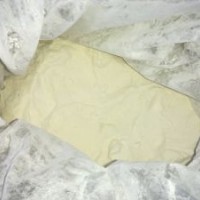Dimethomorph has protectant and curative activity, but is best used as a prophylactive in disease control programmes. Application intervals should be 10-14 days. It controls soil- and air-borne oomycete diseases. It is locally systemic and exhibits translaminar activity following foliar application. Dimethomorph is rainfast and has residual activity. The product can also be applied as a soil drench for root uptake. Dimethomorph controls all actively growing stages of fungi of the order Peronosporales, especially potato late blight. It is known to interfere with the formation of cell walls but the exact biochemical target has not yet been identified. In field trials, alcohol ethoxylate adjuvants have been shown to enhance the activity of the fungicide against downy mildew.
The company recommends that dimethomorph is not used alone in disease control programmes to delay the onset of resistance. Crops should be treated with combination products, tank mixes or in sequence with other products, e.g. mancozeb. The product is non-phytotoxic to target crops and safe to beneficial insects. CropUseCrop uses:
vines, potatoes, tomatoes, tobacco, vegetables
Vines | 300 g ai/ha |
Dimethomorph+mancozeb
Pyraclostrobin+dimethomorph
Dimethomorph+ametoctradin
Fluazinam+dimethomorph
Azoxystrobin+Dimethomorph
Propineb+Dimethomorph
Dimethomorph+metalaxyl
Dimethomorph+Copper calcium sulphate
Dimethomorph+Metiram
Cuprous oxide+Dimethomorph
Type | AI concn |
Wettable powder (WP) | 50% (w/w) |
? | 25% (w/w) |
Dispersible concentrate (DC) | 15% (w/v) |
Algae: EC50 (96 h) >20 mg/l.Bees:Non-toxic to honeybees at 0.1 mg/bee (contact or oral, highest dose tested).Birds:Acute oral LD50 for mallard ducks >2000 mg/kg. Dietary LC50 >5300 ppm.Daphnia: EC50 (48 h) 49 mg/l.Fish: LC50 (96 h) for bluegill sunfish >25, carp 14, rainbow trout 3.4 mg/l.Worms: EC50 for earthworms >1000 mg/kg soil.?
Environmental fate:?
Animals:In rats, the major route of metabolism is demethylation of one of the dimethoxy groups or by oxidation of one of the CH2 groups (ortho- or meta- position) of the morpholine ring. The major route of excretion was the faeces.Soil:Moderately mobile ( Kd 2.09-11.67 ml/g, Koc 290-566). Aerobic soil metabolism 50 66-117 d; no degradates identified except for CO2.Plant:The only significant component of the residue, when present, is the parent compound.
WATER SOLUBILITY: 18 mg/l at 20°C (pH 7).
Mallard duck | LD50 >2,000 mg/kg |
Bluegill sunfish [96 hrs] | LC50>25 mg/litre |
Bobwhite quail | LD50 >2,000 mg/kg |
Rainbow trout [96 hrs] | LC506.8 mg/litre |
Carp [96 hrs] | LC50 18 mg/litre |
Fate in soil:
The half-life of dimethomorph is 14-50 days. The compound has low soil mobility and is not expected to leach.
Fate in aquatic systems:
Dimethomorph is slowly degraded by photolysis in water.




